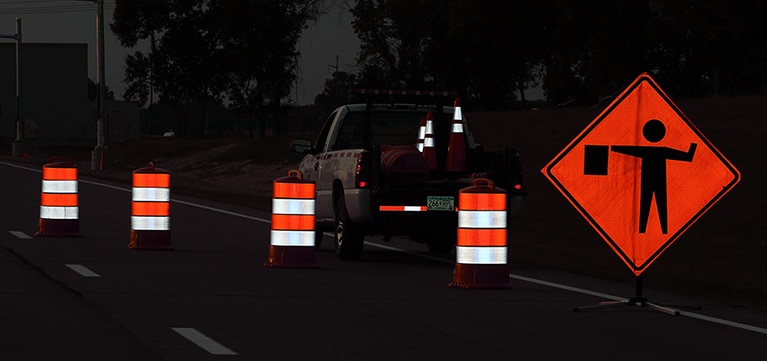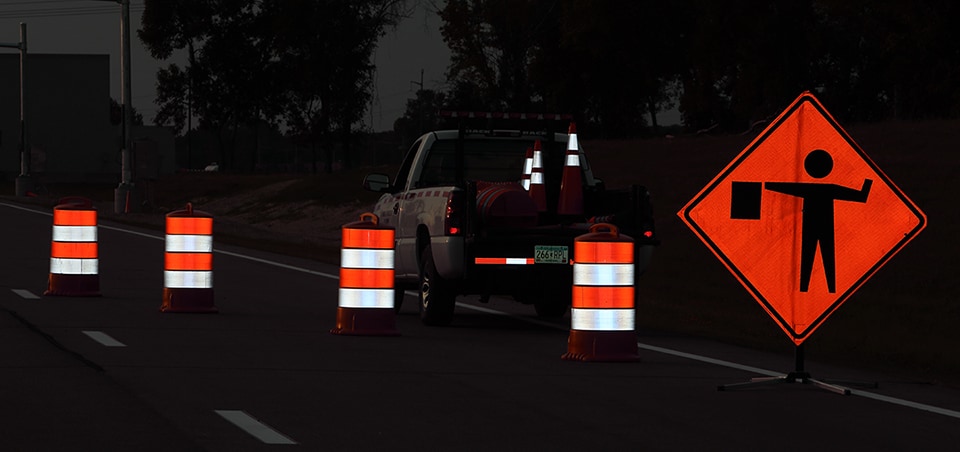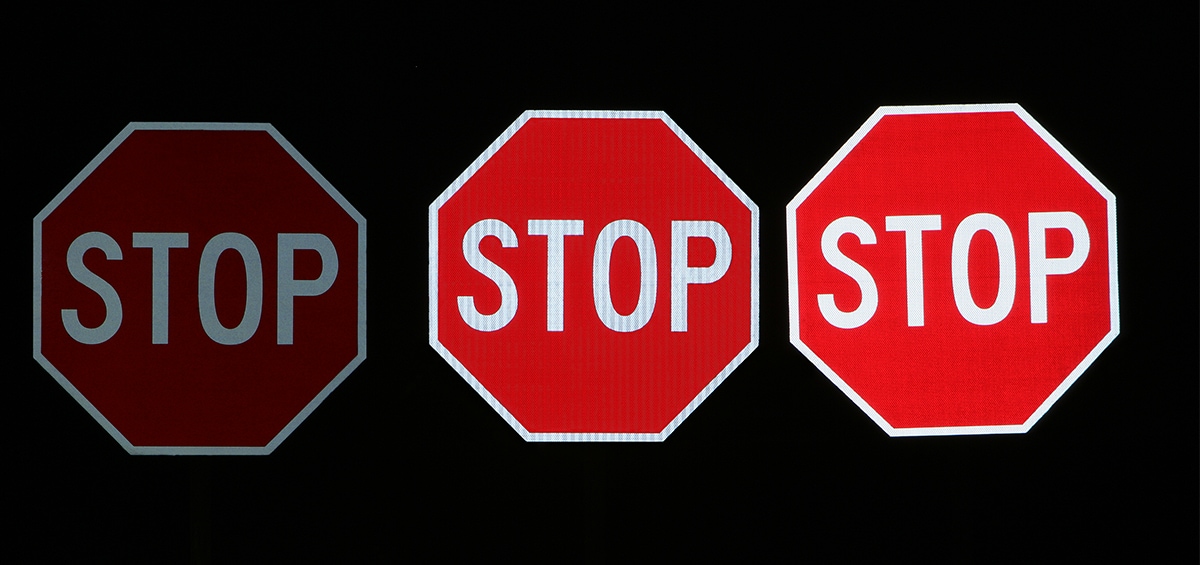-
Brighter Signs Mean Safer Roads



-
According to the Federal Highway Administration, (FHWA) fully half of all traffic fatalities occur at night, even though the nighttime hours account for only a quarter of total vehicle miles driven. Closing this gap has been a major priority for many years, and making traffic control devices more visible to drivers at night is one of the most cost-effective solutions to the problem.
Brighter Signs Help Improve Safety
Research shows that use of higher performing reflective sheeting—resulting in brighter, more visible signs—helps reduce crashes and has a positive cost-to-benefit ratio. A three-year program of upgrading sign sheeting in Sioux City, Iowa resulted in a 34:1 benefit-to-cost ratio, and a six-year program in Mendocino County in California resulted in “savings of 159:1 to 299:1.”
Ripley, D.A., Howard R. Green Company, ITE AB04H313, Quantifying the Safety Benefits of Traffic Control Devices—Benefit-Cost Analysis of Traffic Sign Upgrades, 2005. Contact 3M for the full report.
Less Time Reading, More Time Driving
The purpose of a traffic sign is to communicate important information to drivers. And in real situations—driving fast, traveling at night—drivers simply have limited time to read and understand signs.At night, highly retroreflective sheeting helps make traffic signs not only more conspicuous, but also quicker to understand. In fact, a recent study at the University of Iowa found a direct relationship between a sign’s brightness and a driver’s ability to see the sign and its message. Study participants were able to read and understand brighter signs substantially faster. This study suggests that brighter signs require less eyes-off-the-road time and more time to attend to the driving task, which is directly related to safety.
Schnell, T., Yekhshaytan, L., Daiker, R., Konz, J., Effect of Luminance on Information Acquisition Time and Accuracy from Traffic Signs, Operator Performance Laboratory, University of Iowa, 2008. Contact 3M for the full report.
-
